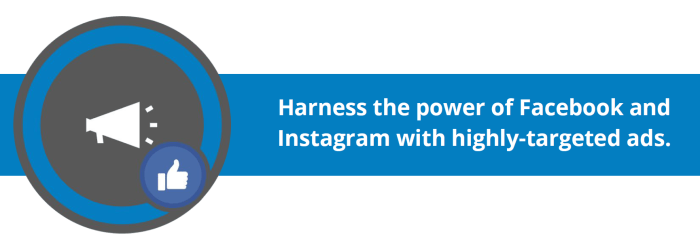Digital Advertising Basics sets the stage for a journey into the world of online marketing, where social media, search engines, and creative strategies collide to create impactful campaigns. Get ready to dive deep into the realm of digital advertising and unlock the secrets to success.
Introduction to Digital Advertising
Digital advertising plays a crucial role in today’s marketing landscape, leveraging online platforms to reach target audiences effectively. Brands use digital ads to promote products, services, or messages to potential customers across various digital channels.
Digital Advertising Channels
- Social Media: Platforms like Facebook, Instagram, Twitter, and LinkedIn allow businesses to run targeted ads based on user demographics, interests, and behaviors.
- Search Engines: Google Ads and Bing Ads enable companies to display ads to users searching for specific s, increasing visibility and driving website traffic.
- Display Ads: Banner ads, pop-ups, and video ads on websites and apps help businesses increase brand awareness and engage with potential customers.
Benefits of Digital Advertising
- Targeted Reach: Digital ads can be tailored to specific audiences, ensuring that the message reaches the right people at the right time.
- Measurable Results: Marketers can track the performance of digital ads in real-time, analyzing metrics like clicks, impressions, and conversions to optimize campaigns.
- Cost-Effective: Compared to traditional advertising methods, digital ads often offer a more cost-effective way to reach a large audience and generate leads.
Key Components of Digital Advertising

Digital advertising campaigns are made up of several key components that work together to drive success. From targeting to creative elements, each aspect plays a crucial role in the effectiveness of the campaign.
Targeting in Digital Advertising
Targeting is a fundamental component of digital advertising as it allows advertisers to reach the right audience with their message. By defining specific demographics, interests, behaviors, and other criteria, advertisers can ensure their ads are shown to users who are most likely to engage with them. Effective targeting leads to higher conversion rates and better ROI for the campaign.
Creative Elements in Digital Advertising
Creative elements such as ad copy, visuals, and landing pages are essential for capturing the attention of the target audience and driving them to take action. Compelling ad copy that resonates with the audience, visually appealing graphics or videos that stand out, and optimized landing pages that provide a seamless user experience all contribute to the success of a digital advertising campaign. These elements work together to create a cohesive and impactful message that drives conversions and achieves campaign objectives.
Digital Advertising Strategies

In the world of digital advertising, having the right strategies in place can make all the difference in reaching your target audience effectively. Let’s dive into some key strategies that can help you maximize the performance of your digital ads.
PPC Advertising
- PPC (Pay-Per-Click) advertising is a popular digital advertising strategy where advertisers pay a fee each time their ad is clicked.
- Platforms like Google Ads and Bing Ads allow advertisers to bid on s relevant to their target audience, ensuring their ads appear in search results.
- PPC advertising is highly targeted, measurable, and can provide quick results if managed effectively.
Social Media Advertising, Digital Advertising Basics
- Social media advertising involves promoting your products or services on social media platforms like Facebook, Instagram, and Twitter.
- With detailed targeting options, advertisers can reach specific demographics, interests, and behaviors to maximize ad relevance.
- Visual content is key in social media advertising, as engaging images and videos can capture users’ attention effectively.
Influencer Marketing
- Influencer marketing leverages the popularity and influence of social media personalities to promote products or services.
- By partnering with influencers who align with your brand values, you can reach their dedicated followers authentically.
- Influencer marketing can help generate buzz, increase brand awareness, and drive conversions through trusted recommendations.
Choosing the Right Platforms
- When selecting digital advertising platforms, consider your target audience’s demographics, behavior, and preferences.
- Research which platforms your audience is most active on and tailor your ads to fit the platform’s content style and format.
- Testing different platforms and analyzing performance metrics can help you determine where your ads perform best.
A/B Testing in Digital Advertising
- A/B testing involves creating two versions of an ad (A and B) with slight variations to determine which performs better.
- By testing elements like ad copy, visuals, CTAs, and targeting, advertisers can identify the most effective strategies for their campaigns.
- A/B testing allows for data-driven decision-making, optimization of ad performance, and continuous improvement in digital advertising efforts.
Metrics and Analytics in Digital Advertising: Digital Advertising Basics
In the world of digital advertising, tracking metrics is crucial for evaluating the success of campaigns and optimizing performance. By analyzing data and key performance indicators (KPIs), advertisers can make informed decisions to improve their strategies and achieve better results.
Key Performance Indicators (KPIs)
- Click-Through Rate (CTR): The percentage of people who click on an ad after seeing it. A high CTR indicates that the ad is engaging and relevant to the target audience.
- Conversion Rate: The percentage of users who take a desired action, such as making a purchase or filling out a form. A high conversion rate shows that the ad is effective in driving user actions.
- Return on Ad Spend (ROAS): The revenue generated for every dollar spent on advertising. A higher ROAS indicates a more profitable campaign.
- Cost Per Acquisition (CPA): The average cost to acquire a new customer. Lower CPA signifies a more cost-effective campaign.
Analytics Tools for Campaign Performance
- Google Analytics: Provides in-depth insights into website traffic, user behavior, and conversion rates, helping advertisers track the effectiveness of their digital ads.
- Facebook Ads Manager: Offers detailed metrics on ad performance, audience engagement, and conversions, enabling advertisers to optimize their Facebook ad campaigns.
- AdWords: Google’s advertising platform that tracks ad clicks, impressions, and conversions, allowing advertisers to measure the impact of their search ads.
